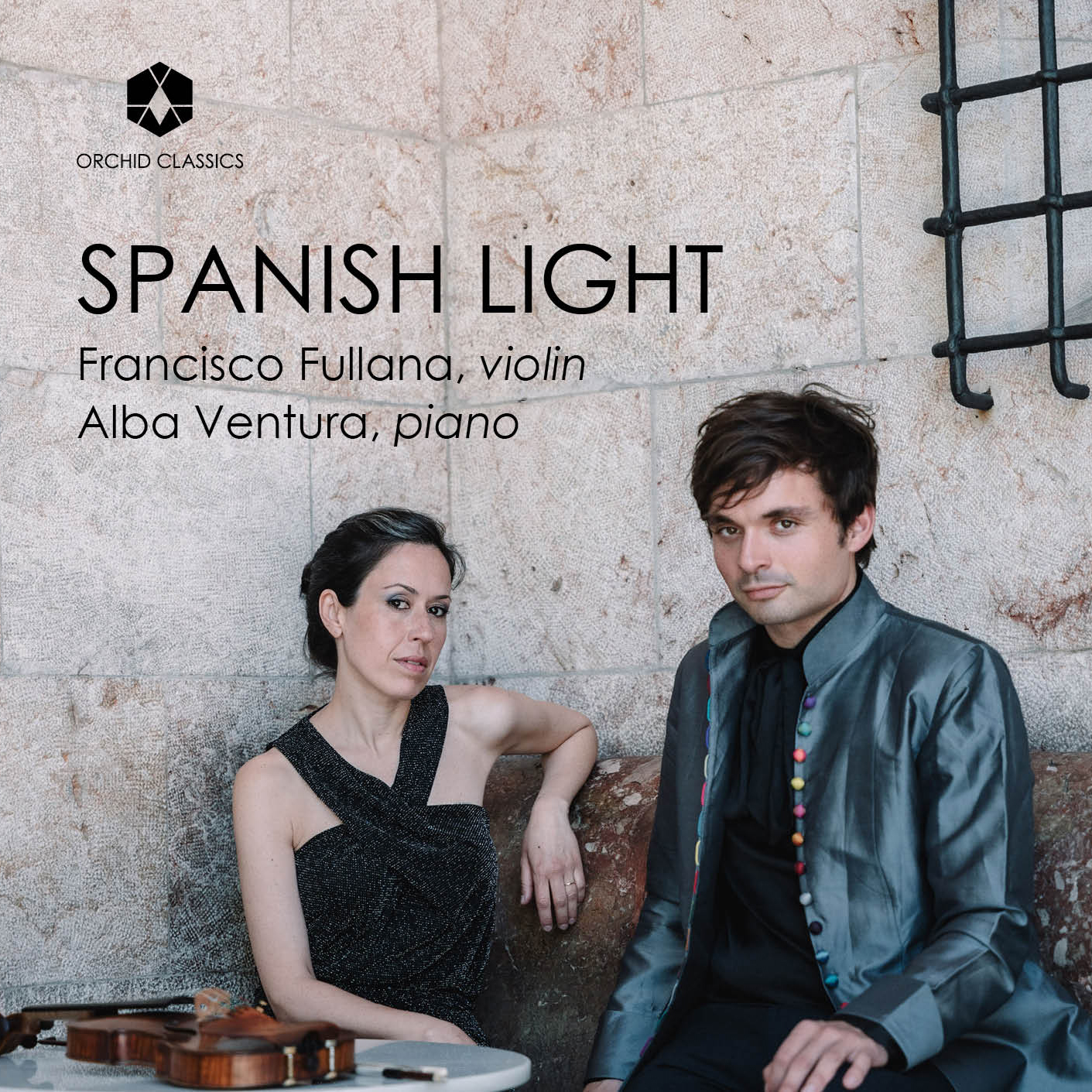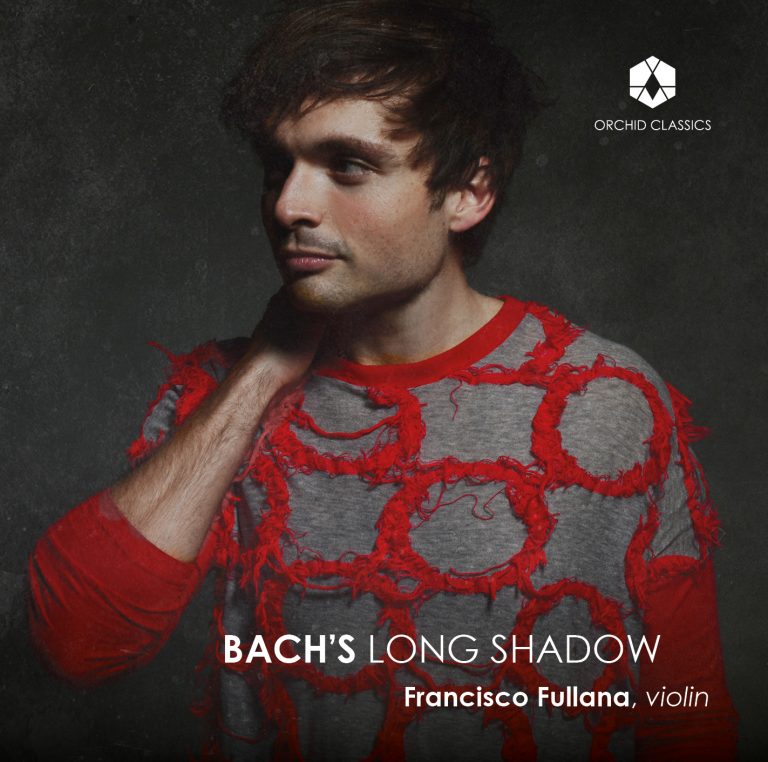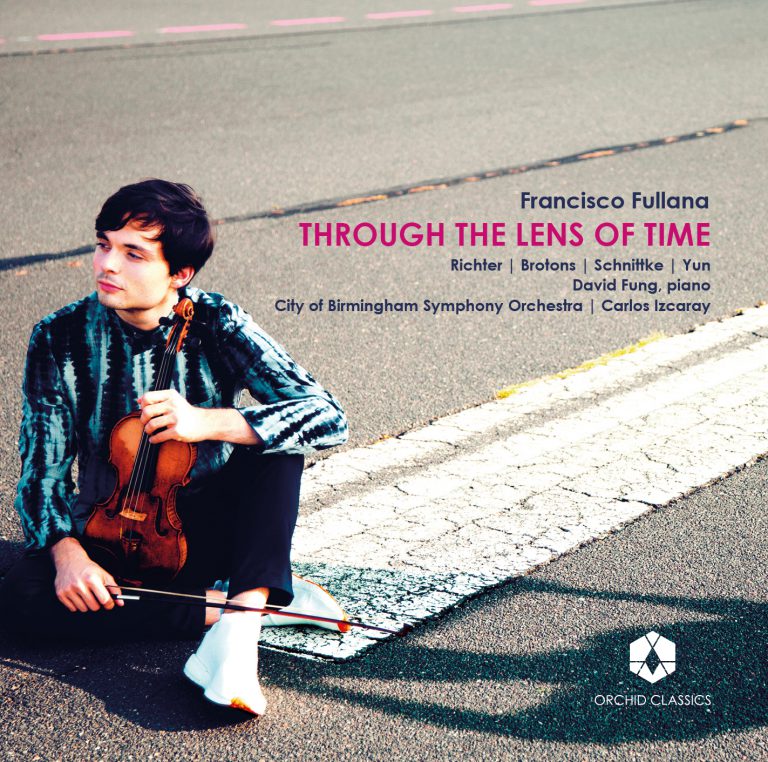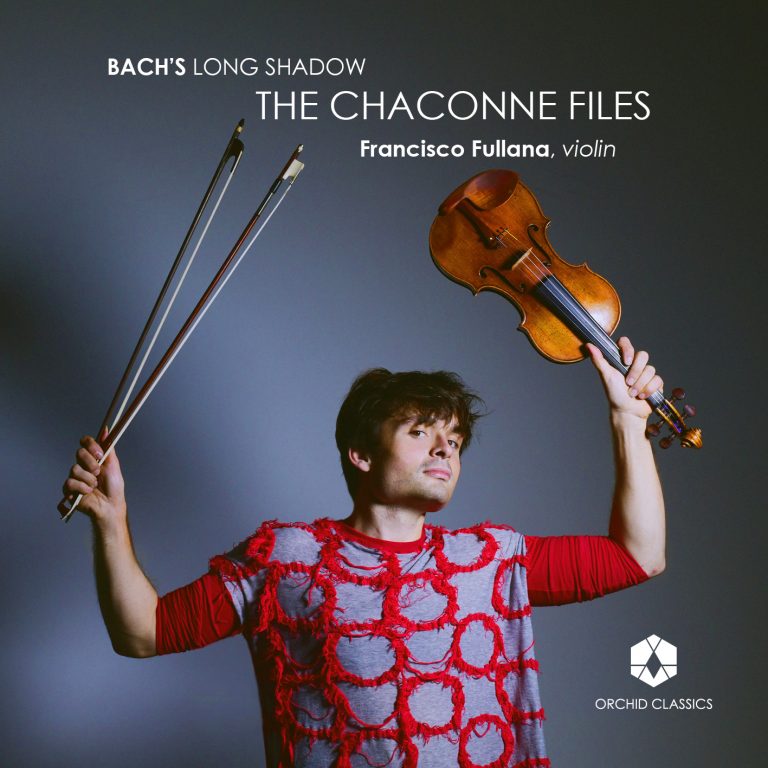Artist Led, Creatively Driven

Spanish Light
Francisco Fullana, violin
Alba Ventura, piano
Release Date: 21st July 2023
ORC100250
SPANISH LIGHT
Joaquín Turina (1882-1949)
Violin Sonata No.2, Op.82, ‘Sonata española’
1. I Lento
2. II Vivo
3. III Adagio – Allegro moderato
Pablo de Sarasate (1844-1908)
4. Romanza andaluza
5. Zigeunerweisen, Op.20, ‘Aires gitanos’
Enrique Granados (1867-1916)
6. Violin Sonata, H.127
Eduardo Toldrà (1895-1962)
Seis Sonetos
7. IV Oració al Maig
8. VI La font
Joan Manén (1883-1971)
9. Caprice catalán, No.3
10. El cant dels ocells
Francisco Fullana, violin
Alba Ventura, piano
The son of a painter of Italian descent, Joaquín Turina was born in Seville, where he became known as a composer and pianist – successes that prompted him to try his luck in Madrid. There, he befriended fellow composer Manuel de Falla, who influenced his ideas on authentic Spanish music. In 1905, Turina moved to Paris, where he studied with Vincent d’Indy at the Schola Cantorum alongside figures such as Debussy and Canteloube. Turina returned to Spain in 1914 – as did Falla – by which time he was considered one of the foremost Spanish composers; he was appointed Professor of Composition at the Madrid Conservatory in 1930.
Turina’s Violin Sonata No.2, Op.82, was written not long after this appointment, in 1934. Dedicated to Pedro Sanjuán – a composer, conductor and teacher – the work is called the ‘Sonata Española’ on account of Turina’s use of Spanish folk music throughout, although the piece also bears the imprint of his French education. Andalusian and gypsy melodies are harmonised in a manner that reflects Parisian experiments in pushing the boundaries of tonality. Even so, there is much to justify the work’s title, such as the opening movement’s variation form of a kind used in Spanish music as far back as the 16th century, with one of the variations in the style of a ‘zortziko’ – a Basque dance with five beats in a bar that also made its way into some of Ravel’s music.
Like Ravel’s mother, Pablo Sarasate was Basque; he came from Pamplona in Navarre. Sarasate was one of the great violinist-composers of the late 19th-early 20th centuries; a virtuoso of prodigious and astonishing ability, prompting George Bernard Shaw to argue that his playing ‘left criticism gasping miles behind him’, while the Hungarian violinist and teacher Carl Flesch wrote in his memoirs of Sarasate’s ‘aesthetic moderation, euphony, and technical perfection … he represented a completely new type of violinist’.
Alongside his Carmen Fantasy, Sarasate’s most famous works are his Spanish Dances – from which we hear the ‘Romanza Andaluza’ – and the dazzling Zigeunerweisen (Gypsy Airs), Op.20. The lilting and lyrical ‘Romanza’ comes from the second volume of Dances, Op.22, written in 1878 during Sarasate’s first Scandinavian tour and dedicated to Moravian violinist Wilma Neruda. The German publisher Simrock, recognising the demand for European folk music, issued the works not long after publishing Brahms’s Hungarian Dances. The two composers had in common another great violinist, Joseph Joachim, the dedicatee of Brahms’s Violin Concerto (also of 1878) – which Sarasate refused to play, complaining that best tune in the slow movement had been given to the oboe instead of the violin.
Sarasate composed his Zigeunerweisen during the same year, conflating Romani gypsy music with Hungarian folk music; the latter formed the basis of the piece. Originally for violin and orchestra, Zigeunerweisen is in one continuous movement divided into different sections, all of which possess a distinct character: Moderato – lento – Un poco più lento – Allegro molto vivace. Sarasate made his own arrangement for violin and piano, which he recorded with fellow composer Joan Manén in 1904.
Enrique Granados was a Catalan composer who studied the piano in Barcelona; as a composer he was essentially self-taught. He spent time at the Paris Conservatoire before returning to Barcelona, and he started to gain international recognition when his 12 Danzas españolas for solo piano were published in 1890; one critic praised their authentic national character and compared Granados favourably with Grieg. Although proud of his Catalan identity, Granados was cosmopolitan in his enjoyment of different national styles: ‘I consider myself as much a Catalan as anyone, but in my music I want to express what I feel … be it Andalusian or Chinese’. He caused a stir when he arrived in New York in 1915, declaring that the world knew nothing of Spanish music, but his presence there was significant – he was the first Spanish composer to be welcomed to America under the auspicious circumstances of an opera premiere – and he was invited to meet President Wilson at the White House.
Granados wrote his single-movement Violin Sonata for his friend, the French violinist Jacques Thibaud, with whom he regularly performed. The work’s date is uncertain, and it was not published until 1971. The Sonata opens unusually, with soft piano chords, after which the violin unfurls a winding melody tinged with Spanish inflections. This is then treated almost cyclically – perhaps showing the influence of Franck and Fauré – the melody varied with spontaneous, increasingly passionate idioms, before the work ends as softly as it began.
The music of Catalan violinist, composer and conductor Eduardo Toldrà is rooted in the harmonies of Granados and Grieg, but frequently follows the contours and rhythms of Catalan folk music. ‘Oració al Maig’ and ‘La Font’ are movements four and six of Toldrà’s Six Sonnets for violin and piano of 1921-22. The eloquent lines and imitative textures of ‘Oració al maig’ (Supplication to the month of May) suggest the influence of Franck’s Violin Sonata (1886), while ‘La Font’ (The Spring) exudes a warmly animated, folk-like sense of anticipation.
Joan Manén was another prodigiously talented Catalan violinist and self-taught composer. As a virtuoso, he was internationally admired from a young age; as a composer he gained the admiration of Richard Strauss and Wagner, and their influence is apparent in his orchestral output. Manén made many arrangements – both vocal and instrumental – of Spanish and Catalan folk melodies, and his love of his native region is also audible in his Four Catalan Caprices of 1898-89, originally for violin and orchestra. The Caprice Catalan No.3, Op.23 (1899) has the Catalan subtitle ‘Planys i goigs’ meaning ‘Laments and joys’. The piece opens with an extended violin soliloquy before the piano joins in, the material for the two instruments intertwining with rapturous ease.
Our recital ends with a traditional Catalan Christmas song, El cant dels ocells or ‘Song of the Birds’, as adapted by Francisco Fullana from the arrangement made by Catalan cellist Pablo Casals. The piece was made famous by Casals, who played his arrangement of the song at the start of every recital during his exile from Francoist Spain; it has become, as a result, a symbol of Catalonia itself.
© Joanna Wyld, 2023
Francisco Fullana
Violin
A native of Mallorca in the Balearic Islands of Spain, Francisco Fullana is making a name for himself as both a soloist and a leader of innovative educational institutions around the world. A recipient of the 2018 Avery Fisher Career Grant and the 2023 Khaledi Prize, he has performed with orchestras such as the Münchner Rundfunkorchester, Spanish Radio Television Orchestra, Argentina’s National Orchestra, Venezuela’s Teresa Carreño Orchestra, and numerous U.S. ensembles including the Saint Paul Chamber Orchestra, the Buffalo Philharmonic, and the Vancouver, Pacific, Alabama, and Maryland symphony orchestras. He has worked with such noted conductors as the late Sir Colin Davis, Gustavo Dudamel, Alondra de la Parra, Christoph Poppen, Jeannette Sorrell, and Joshua Weilerstein.
In 2018 Orchid Classics released Francisco’s acclaimed debut recording Through the Lens of Time, which includes Max Richter’s 2012 composition The Four Seasons Recomposed—performed with the City of Birmingham Symphony Orchestra under Carlos Izcaray—along with other 20th century works exploring connections with the baroque era, by Alfred Schnittke, Salvador Brotons, and Isang Yun. Fullana’s love for the sound of gut strings has blossomed into an artistic partnership with the Grammy Award winning baroque ensemble Apollo’s Fire, both in performance and in the recording of Spanish and Italian baroque music, as well as in his last solo album under the Orchid Classics label, Bach’s Long Shadow, which was named BBC Music Magazine’s ‘Instrumental Choice of the Month.’ Julian Haylock described Fullana’s playing as ‘combining Itzhak Perlman’s warmth with the aristocratic poise of Henryk Szeryng.’
Active as a chamber musician, Francisco is a performing member of The Bowers Program at the Chamber Music Society of Lincoln Center, and has participated in the Marlboro Music Festival, the Musicians from Marlboro tours, the Perlman Music Program, the Da Camera Society, and the Moab, Music@Menlo, Mainly Mozart, Music in the Vineyards, and Newport music festivals. His musical collaborators have included Viviane Hagner, Nobuko Imai, Charles Neidich, Mitsuko Uchida, and members of the Guarneri, Juilliard, Pacifica, Takács, and Cleveland quartets.
Born into a family of educators, Francisco is a graduate of the Royal Conservatory of Madrid, where he matriculated under the tutelage of Manuel Guillén. He received Bachelor’s and Master’s degrees from The Juilliard School following studies with Donald Weilerstein and Masao Kawasaki. He holds an Artist Diploma from the USC Thornton School of Music, where he worked with the renowned violinist Midori.
In 2015 Francisco was honored with First Prize in Japan’s Munetsugu Angel Violin Competition, as well as all four of that competition’s special prizes, including the Audience and Orchestra awards. Additional awards include First Prizes at the Johannes Brahms and Julio Cardona International Violin Competitions, the Pro Musicis International Award, and the Pablo Sarasate Competition.
Francisco is a committed innovator, leading new institutions of musical education for young people. He is a co-founder of San Antonio’s Classical Music Summer Institute, where he currently serves as Chamber Music Director. He also created the Fortissimo Youth Initiative, a series of music seminars and performances with youth orchestras, which aims to explore and deepen young musicians’ understanding of 18th-century music. The seminars are deeply immersive, thrusting youngsters into the sonic world of a single composer while inspiring them to channel their overwhelming energy in the service of vibrant older styles of musical expression. The results can be galvanic, and Francisco continues to build on these educational models.
Francisco Fullana performs on the 1735 “Mary Portman” ex-Kreisler Guarneri del Gesù violin, kindly on loan from Clement and Karen Arrison through the Stradivari Society of Chicago.
Alba Ventura
Piano
Alba Ventura is heir to the great legacy of the Spanish school of pianism represented by the tradition of the Acadèmia Marshall, founded by Enrique Granados in 1901. This interpretative style was preserved by Granados’ disciple Frank Marshall and transmitted to Ventura by Carlota Garriga and Alicia de Larrocha.
Born in Barcelona, Alba Ventura made her debut as a concert soloist at the age of thirteen with the Orquestra de Cadaqués conducted by Sir N. Marriner in San Sebastian and at the Auditorio Nacional de Música in Madrid. Her career as an international soloist has since taken her to the grandest international stages such as the Wigmore Hall, the Barbican and St Martin-in-the-Fields, the Concertgebouw in Amsterdam, the Musikverein in Vienna, the Cité de la Musique in Paris and the Svetlanovsky Hall in Moscow and the most important Spanish concert halls. Her international activity has also taken her to perform in the USA, Colombia, Argentina, New Zealand and China. Ventura has collaborated with conductors such as Antonini, Harth-Bedoya, Hogwood, Mas, Oue, Pons, Ros Marbà and Vásary, and performed with prestigious orchestras such as the Philharmonia, the Hallé, London Mozart Players, the Hungarian Philharmonic Orchestra, the Czech National Symphony Orchestra, as well as the main Spanish orchestras.
Alba Ventura is in addition a devoted chamber musician and has worked together with Elisabeth Leonskaja, Brodsky, Takacs and Casals quartets and violinists Lina Tur Bonet, Francisco Fullana, Boris Belkin, Gordan Nikolic and Tai Murray. Alba won the international auditions of the Young Concert Artist Trust (YCAT), was selected for the Rising Stars programme promoted by ECHO (European Concert Halls Organitzation) and has been awarded the Queen Elizabeth Rosebowl by His Royal Highness The Prince of Wales, the IMPULSA prize by the Fundació Príncep de Girona, the Albéniz Medal by the Fundació Isaac Albéniz and the 2021 MIN award for best classical music album.










